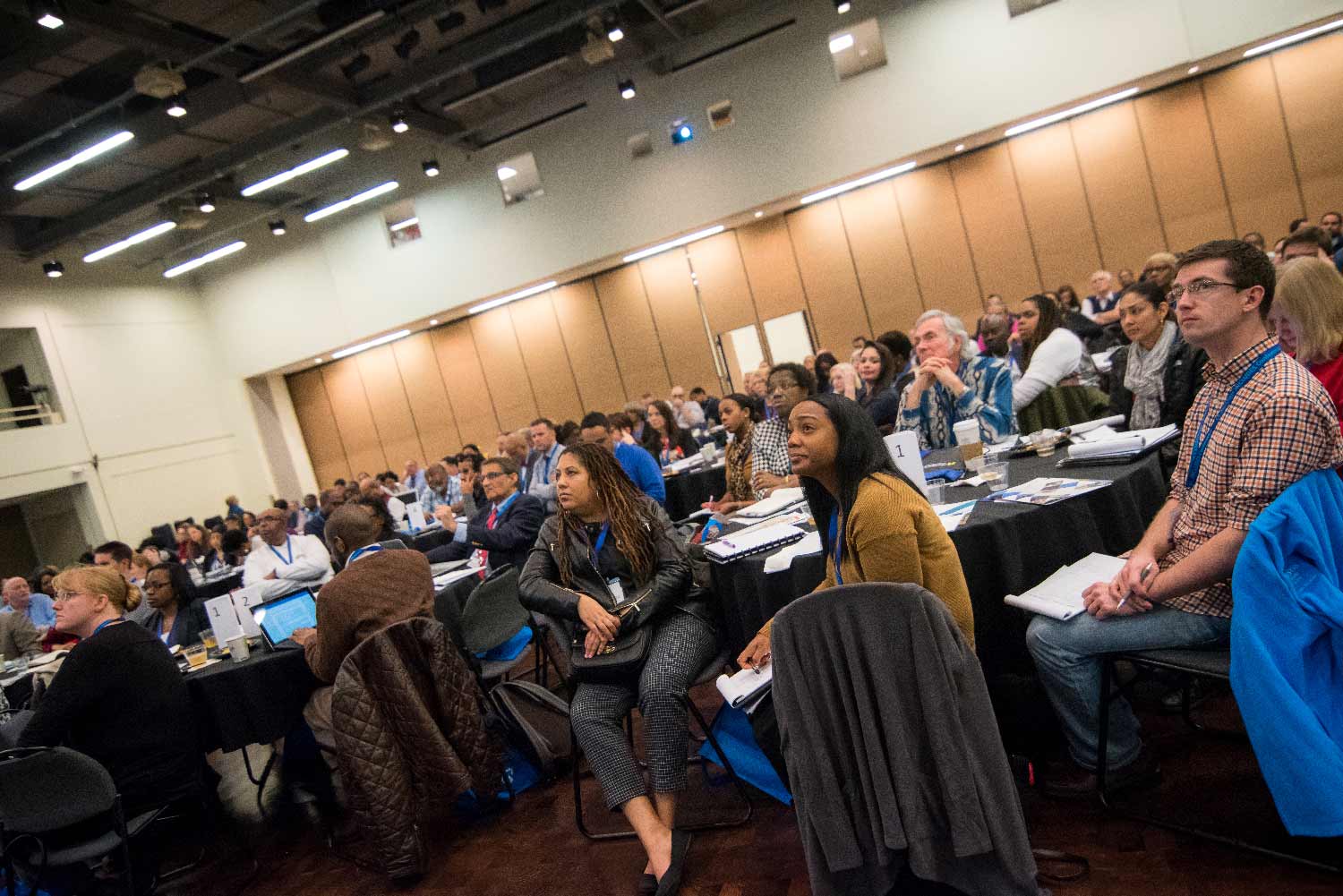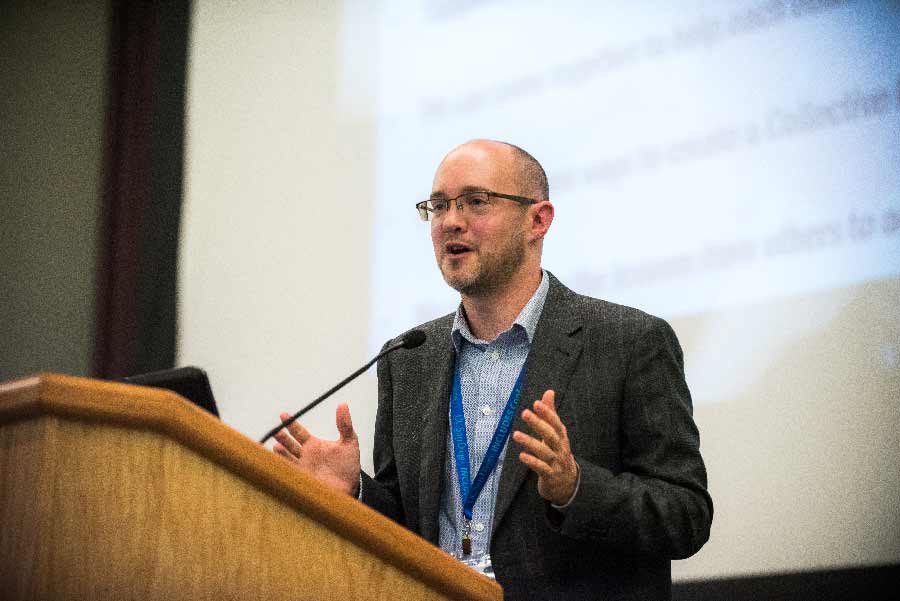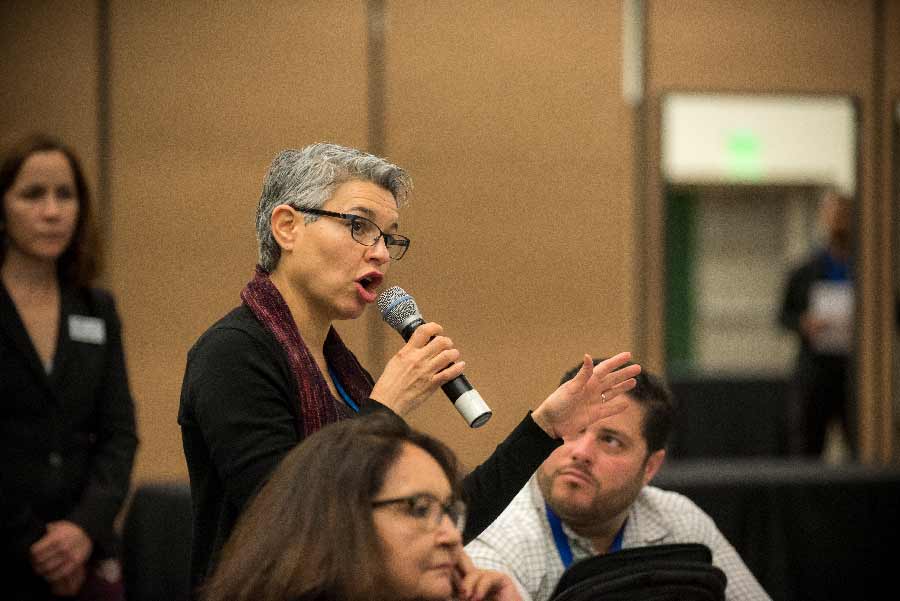By:
- Kristin Schafgans
Published Date
By:
- Kristin Schafgans
Share This:

Photos by Lily Tang/UC San Diego Publications
Leveraging Collective Impact to Increase Diversity in STEM
How should the U.S. tackle the complex social problem of increasing diversity in STEM fields? That’s the big question that prompted a national conference held at UC San Diego Jan. 20-22.
Funded with a $250,000 grant from the National Science Foundation (NSF), the conference was the first to be held as part of NSF INCLUDES, a new initiative focused on building cross-sector partnerships to improve STEM (science, technology, engineering and mathematics) participation at the national level.
Nearly 200 representatives from K-12, higher education, industry, government and nonprofit spheres attended the UC San Diego conference, which was coordinated by the Graduate Division. Titled “Collective Impact as a Pathway to Reinvigorate Broadening Participation in STEM,” the three-day meeting included a mix of guest speakers and workgroup sessions focused on the STEM pipeline.
“If you are here, it’s probably because you already care very passionately about these issues of equity, inclusion and broadening participation,” said Kim Barrett, distinguished professor of medicine at UC San Diego and principal investigator on the grant. “Many of us feel that while progress has been made, it has been too slow. We need a new way of thinking about these issues to really make an impact.”

Keynote speaker Colin Nelson of HYPE Innovation
The approach of NSF INCLUDES (Inclusion across the Nation of Communities of Learners of Underrepresented Discoverers in Engineering and Science) is to develop networks and partnerships of stakeholders from different sectors committed to a common agenda: broadening participation in science and engineering. In the nonprofit sphere, this strategy is sometimes referred to as “collective impact”—the idea of bringing people together, in a structured way, to achieve social change.
The goal of the UC San Diego conference was twofold. First, to develop recommendations for the NSF for the type of infrastructure and support systems needed to make this initiative successful. Second, to empower participants with new tools, based on the collective impact model, to use in efforts at their home institutions.
“No single person, no individual organization or government department has the solution to the challenge of increasing diversity in STEM,” said keynote speaker Colin Nelson.
Nelson, who serves as director of enterprise innovation consulting at HYPE Innovation, specializes in the social science that underpins how large or diverse groups collaborate online and has supported clients such as Fujitsu, Harley Davidson and NASA.
The same principles that these corporations use to coordinate large, diverse groups to meet business goals, he said, can be applied to our challenge of broadening participation in STEM.
“Each group has their own role to play, we all have different strengths and we experience the challenge of inclusion in different ways,” said Nelson. “Only by coming together and bringing the collective intelligence of this community are we going to fix this problem.”
With the tone of collective impact set, the conference continued with sessions focused on everything from using data to advance initiatives at the K-12 and community college levels, to the social and cultural barriers to STEM inclusion, to the employer’s perspective on preparation for STEM careers.

Attendees shared experiences from their home institutions related to diversity in STEM
Olivia Graeve, professor of mechanical and aerospace engineering at UC San Diego, gave a personal account of her journey through the STEM pathway. Graeve grew up in Tijuana and attended Southwestern Community College before transferring to UC San Diego to study structural engineering.
“There was a strong sense of community for me as a UC San Diego student,” she said. “I was part of a minority engineering program and it played a very big role in my education. It also informed my ideas of what it means to be part of an inclusive community.”
Graeve urged attendees to think deeply about community building in their own institutions as a key to supporting students’ success. She described her own cross-border efforts to inspire underrepresented students as an example. One of the first initiatives Graeve put in place when she arrived at UC San Diego in 2013 was an academic summer program for female high school students from Tijuana and San Ysidro.
Reflecting on the conference afterward, Graeve noted the timing of the event, which coincided with the presidential inauguration. “We cannot forget that this country was built on the concept of embracing different views and different people. With the commitment to diversity that I’ve seen here, we can play a role in making sure that message gets across the nation.”
UC San Diego was one of 11 institutions to receive an NSF INCLUDES conference grant. In addition to these grants, the NSF has awarded 37 Design and Development Launch Pilots, two-year grants aimed at supporting projects with the potential to deliver prototypes for bold, new models that broaden participation in STEM. The NSF plans to expand the INCLUDES program over the next decade with the goal of developing a science and engineering workforce that better reflects the diversity of U.S. society.
Share This:
You May Also Like
Stay in the Know
Keep up with all the latest from UC San Diego. Subscribe to the newsletter today.



